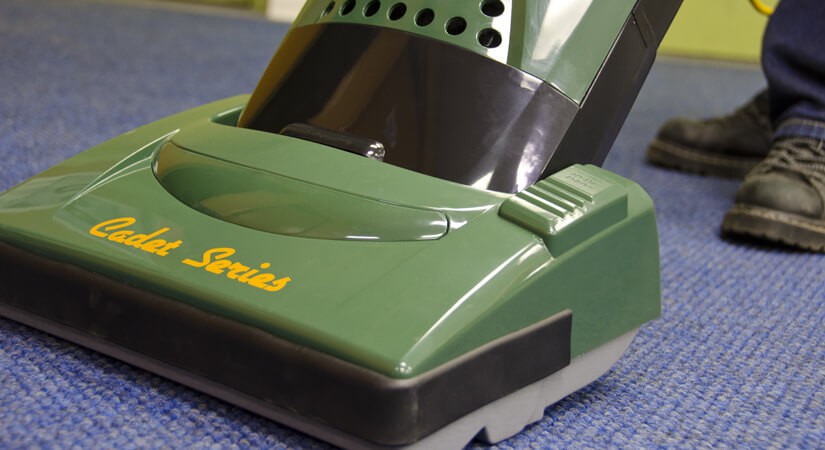Keeping a building or house clean and healthy takes a lot of work. We spend hours mopping tile floors, scrubbing sinks, tubs and toilets, deodorizing and disinfecting rooms from the ground up. All too often however, we neglect the surface that most of our soil settles: carpet. Before you protest that you vacuum every week, or even every day in some cases, stop and think about how thoroughly and efficiently this task is done. Are you or your crew moving everything sitting on the floor such as chairs, waste baskets, chair mats, coat racks? How often do you “spot vacuumâ€, just focusing on picking up the things that you can see? How about your equipment? Do you change your bags often enough so the air can flow, or do you pack that bag until it can’t hold anything else? Is your vacuum powerful enough to handle the work load required of it? From my experience, the answers to those questions are usually no or sometimes.
Let’s take a second to think about what your carpet really does. There’s no doubt that the right carpet can connect the décor of a room to make it look comfortable and inviting. A nice thick carpet with sufficient padding can also make it easier to stay on your feet without back pain. The most important role that carpet plays however is to filter and capture particles that would otherwise be in the air that we breathe. Microscopic allergens, dry dirt, dander, hair and soil all embed themselves in the carpet. Most filters that we commonly use are designed to be removed and easily cleaned, or even thrown away. This filter however is where we wipe our feet or place our furniture.
In order to keep these particles from re-circulating into our air and being redistributed by our shoes we need to thoroughly vacuum every square inch, including the places that we don’t usually see. Some areas should be vacuumed every day. The Carpet and Rug Institute (CRI) states that vacuuming in high traffic and pet areas should be done daily, medium traffic lanes should be vacuumed twice a week and once a week should be reserved for low traffic areas. This doesn’t mean simply running the vacuum cleaner quickly over an area so that those comforting lines can assure us that the carpet is clean. It often takes several passes in one area to fully remove those potentially harmful particles.
It isn’t just our health that we should be concerned about when discussing regular vacuuming. A comprehensive carpet cleaning plan also extends the life of the carpet itself. Loose soil sits at the base of the carpet fibers, continually wearing away as foot traffic agitates it. Look at it as a very slow, but effective sand blaster. By thoroughly removing this soil regularly you can extend the appearance and effectiveness of your carpets by a matter of years.
When we look beyond the material purpose of carpeting we see that it is a resting place for everything that we work so hard to remove from our homes and work places. By dedicating the appropriate time daily and weekly for your particular environment, you can significantly improve the condition of the carpet as well as the health of everyone who works and plays in the building. Just do yourself and the people around you a favor and think about the amount of soil and allergens that enter the building daily and evaluate whether or not you are committing enough effort to remove it all.

